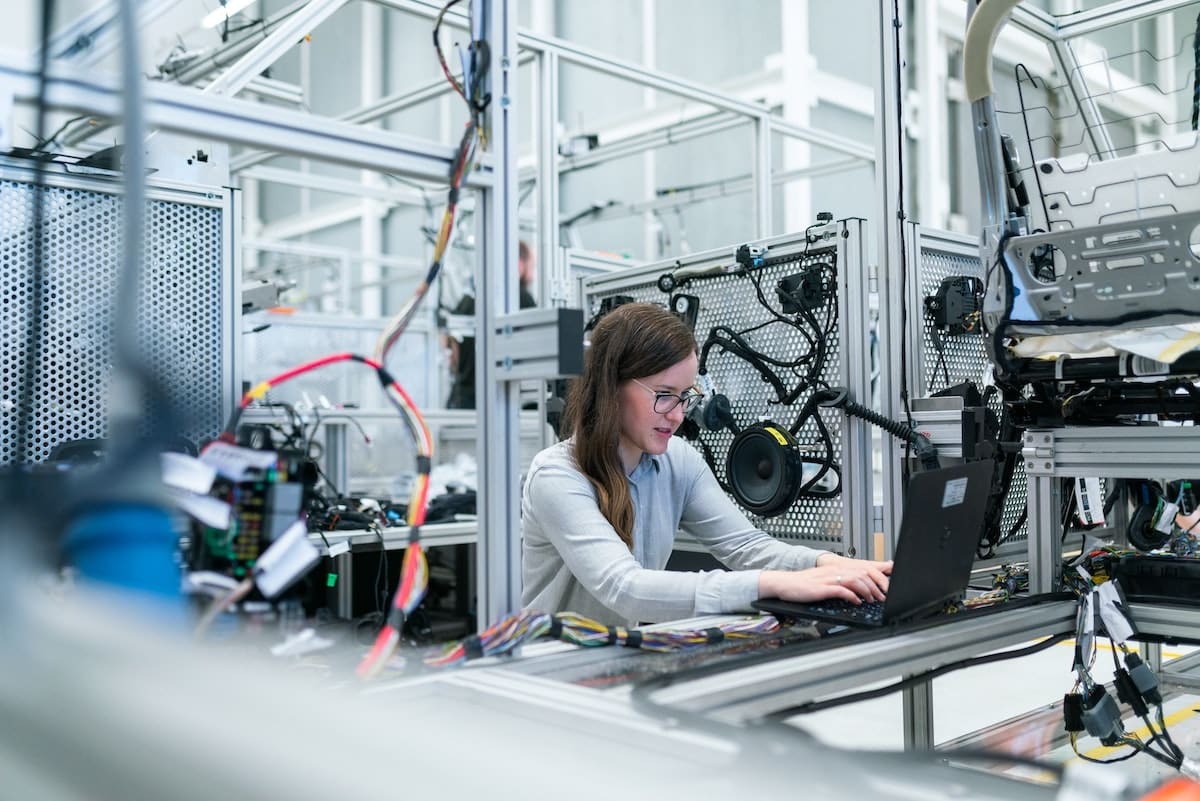Digital twin technology is rapidly gaining traction across various industries, and for a good reason. This contemporary technology has the potential to revolutionize how companies operate by providing them with a virtual replica of their physical assets, processes, and systems. This replica, or “twin,” can help simulate real-world scenarios, identify areas for improvement, and optimize operations. This article highlights the rise of digital twin technology and its applications in various industries.
What Is a Digital Twin?
A digital twin is a virtual representation of a physical object or system created using data from sensors and other sources. This representation can assist in simulating the behavior of the real-world object or system, and you can update it even when gathering new data. Digital twins can also be useful when representing a wide variety of physical assets, such as buildings, machines, and even entire cities.
The central concept behind digital twin technology is creating a digital replica of an asset that is updated with real-time data from the physical world. This digital replica is a software-based representation of the real-world asset that allows for simulation, analysis, and prediction of the asset’s performance. By providing the ability to predict the asset’s future behavior, engineers and managers can make data-driven decisions that optimize performance, reduce downtime, and ultimately increase overall output.
Applications in Various Industries
Digital twin technology may be innovative, but it lends itself well to a variety of fields. For example, it can find applications in:
- Manufacturing
In the manufacturing industry, digital twins can help optimize production processes and improve efficiency. For example, by creating a digital twin of a factory, companies can simulate different production scenarios and identify bottlenecks, which can help them to improve production layouts, reduce downtime, and increase overall output.
- Health Care
In the healthcare industry, digital twins can help simulate surgeries, train medical professionals, and design new medical equipment. For example, by creating a digital twin of a patient’s heart, doctors can simulate a surgical procedure and identify potential complications before the actual operation occurs. This aspect can help reduce the risk of complications and improve the outcome of the surgery.
Additionally, medical professionals can also use digital twins for simulation-based training for complex procedures, where a virtual environment can be of great help.
- Construction
In the construction industry, digital twins can assist professionals in planning, designing, and constructing buildings. By creating a digital twin of a building before it is constructed, architects and engineers can identify potential problems and make adjustments before construction begins, saving time and money in the long run.
Digital twins can also help monitor the construction process in real-time, identify issues and make adjustments on the fly. This facet can help minimize delays and increase the overall efficiency of the construction process.
Adding digital twins in construction procurement software can also expedite the process of sourcing raw materials.
- Energy
In the energy industry, digital twins can help optimize the performance of power plants, wind farms, and other energy-related assets. By creating a digital twin of an energy system, operators can analyze data in real time and identify ways to improve performance, reduce costs, and minimize downtime.
Additionally, digital twins can assist in simulating different scenarios and predict the energy system’s performance under different conditions. This way, operators can make data-driven decisions that can help increase the energy system’s overall efficiency.
The Role of Scraping in Digital Twin Technology
Scraping is a technique used to extract data from a website automatically. This process is often achieved with Selenium, a set of tools and libraries that allow for browser automation during the data-acquisition phase.
This technique helps collect data from sources that are not easily accessible, such as websites that do not have APIs (Application Programming Interfaces) or data that is not readily available in a structured format. Scraping can assist in gathering data to create a digital twin of an asset, such as sensor data, images, and other information.
Conclusion
Digital twin technology is already having a significant impact on various industries, and its importance will continue to grow in the future. By providing a virtual replica of physical assets and systems, digital twins can help companies improve efficiency, reduce costs, and identify areas for improvement.
Scraping is an essential technique in digital twin technology that can help gather data from sources that are not easily accessible. As digital twin technology becomes more sophisticated and data becomes more accessible, its potential to revolutionize the way companies operate will only continue to grow.
Photo by ThisisEngineering RAEng on Unsplash


